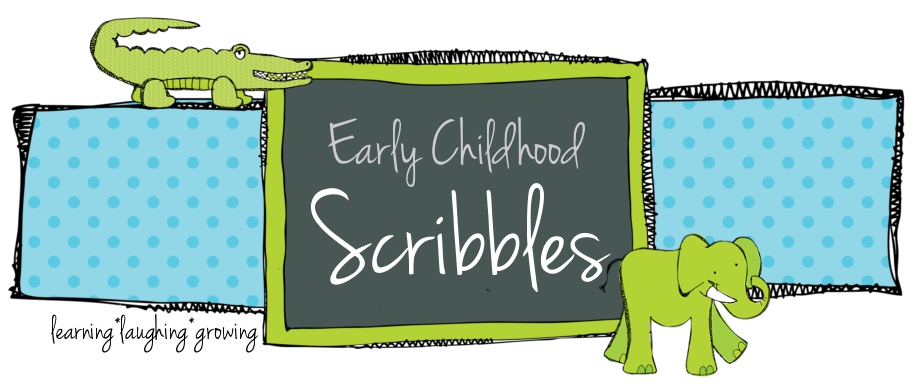Here is our daily schedule. I have a full day class (8:00-4:00). I tweak our schedule and routines a little bit every year (and sometimes throughout the year), to meet the needs of my students and try new things, so who knows how long THIS will be our schedule.
I display a picture schedule on our white board. I have a little button I move down as we move from one thing to another. This helps students know what is coming next. Also when there is a change in our schedule, I can just flip the cards around and they still know what's going on.
Welcome (3 minutes)
I greet students when they walk in the door and help them through our morning routine.
- Daily Folders in the black box.
- Backpacks in cubbies. (Put rest time things away on Mondays)
- Sit down and work on Morning Work.
Morning Work (15 minutes)
Every morning, students come in and complete their morning work. At the beginning of the year we do rainbow names. Each student traces their name with three times with different colored crayons. This makes their name look like a rainbow! As the year progresses, we do journals during this time as well. We also switch to writing our names with pencils later in the year.
Choice Time - #1 (45 minutes)
After students complete their morning work, they can choose a center. My TA and I try to reserve this time for being in the centers with the kids asking questions, facilitating conversation, teaching play, modeling social skills, etc.
Outside Time - #1 (30 minutes)
I'm pretty sure outside time is every child's favorite time of the day! Although this year, we had to wear jackets on the first day of school! CRAZY (and now it's back up in the high 90's . . . St. Louis weather!)
Calendar Time & Math Mini-Lesson (10 minutes)
Our calendar time (5 minutes) consists of singing the days of the week, saying the month, counting to find the date and adding it to our calendar, looking to see what color or shape comes next in our pattern and singing our seasons song. Then we have a short mini-lesson (5 minutes) on a math topic, such as an estimation jar, counting objects, skip counting, rote counting, etc.
Snack Time & Independent Reading (10 minutes)
A preschoolers second favorite time of day!
When they are finished with snack, they choose a book to read independently while they wait for our friends to finish snack.
Literacy Time (10 minutes)
This time looks very different each day. We do shared reading and a letter song every day. Throughout the week we cover reading, writing, phonemic awareness, and phonics through a variety of different activities.
Choice Time (90 minutes)
This is our loooong choice time! This is when we do small groups, art, and more teacher directed/needed activities.
Large Group (15 minutes)
Our large group is when we focus on social skills, science, the theme, or more literacy and math.
Lunch (30 minutes)
Hey, we have to refuel from our full day of playing and learning! In our school, we have a lunch room we eat in. So we have to be very punctual, as other classes come in to eat after us.
Outside - #2 (20 minutes)
Missouri standards recommend a minimum of 50 minutes for outside play! Which is fine by me, my kids loving playing outside and it is essential that they develop their large motor skills.
Rest Time (120 minutes)
The teacher's favorite time of the day!!!! :P
Snack & Independent Reading (30 minutes)
Our snack time in the afternoon is a little longer, since it takes awhile for everyone to wake up and put their things away. It also allows all of our students to get independent reading time.
Repeated Reading (10 minutes)
We read the same book everyday of the week. This increases student comprehension, vocabulary, and ability to retell. After we've read the book a few times, I start letting the kids finish the phrases in our books. They think it's so cool that they are an "expert" on the book.
Dismissal (15 minutes)
During the warm months, we dismiss from the playground. When it gets cold, we dismiss from the classroom.
*This is the third time I've edited this post because I keep finding mistakes. It's not even 10:00pm yet, but it feels like 2am. The first week of school is exhausting!!!!




































